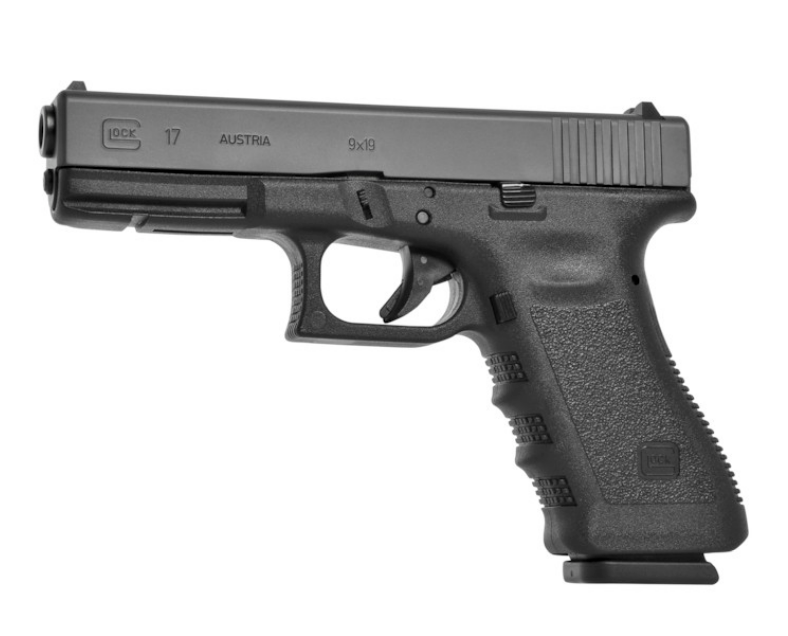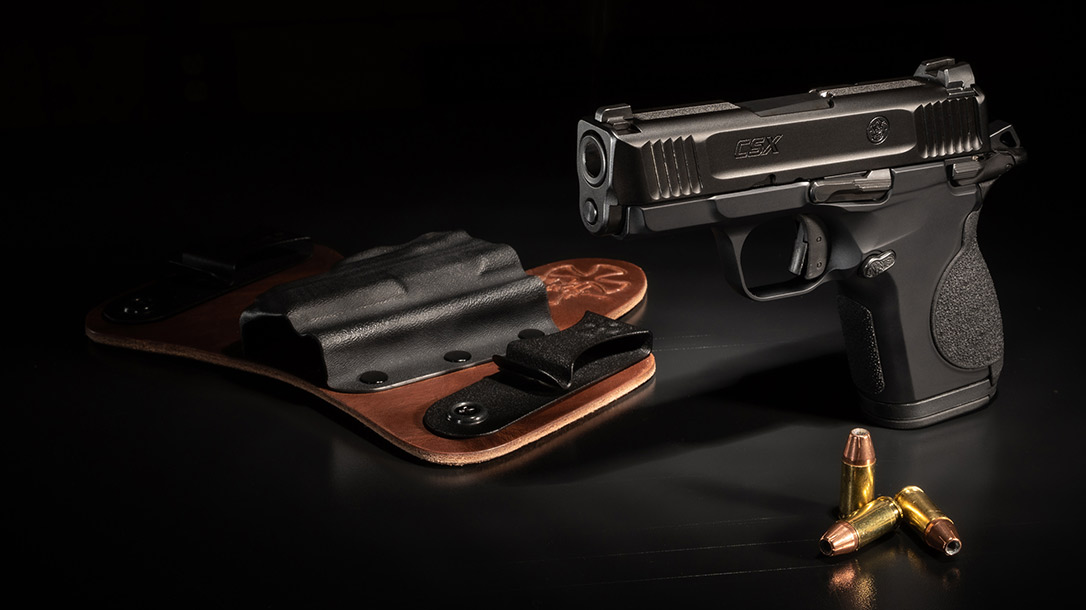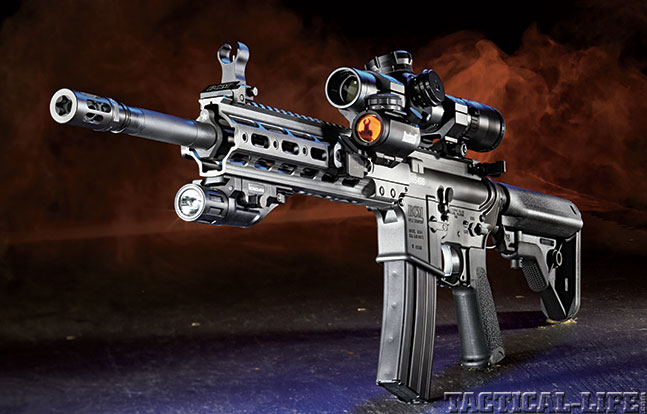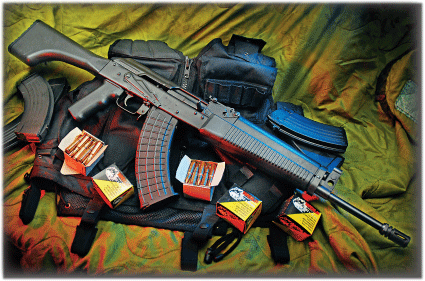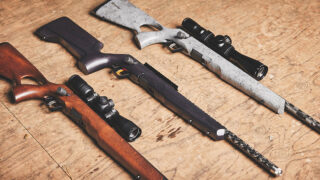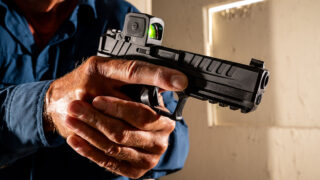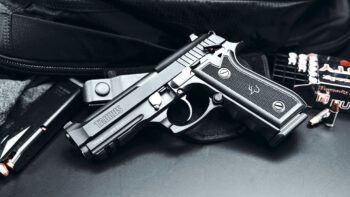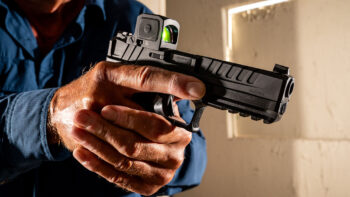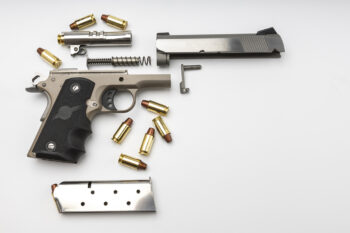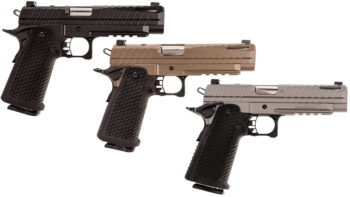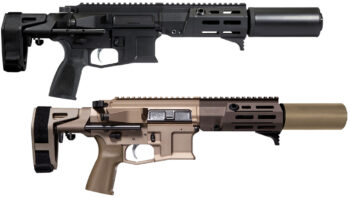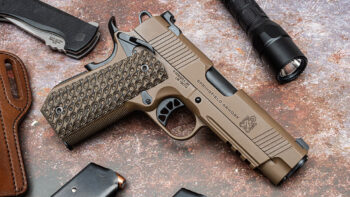The Glock 17 Set the Standard for Service Sidearms Worldwide
The Glock 17 has become one of the most widely-used military and police handguns ever made. Chambered for 9x19mm, the Glock 17 delivers 17+1 rounds in a compact, lightweight package. It was designed to be accurate, durable, and easy to use and maintain. Now widely imitated throughout the firearms industry, the frame used by Glock was considered a radical departure when it was first introduced.
This radical construction is also the reason the Glock 17 has been one of the most extensively tested military handguns ever. Introduced in 1980, the Glock 17 first saw military service with the Austrian army in 1983. Soon after, it was adopted by the armies of Sweden and Norway. By 1987 the Glock 17 was designated a NATO standard pistol. It now serves as the standard service pistol in hundreds of military and police forces worldwide.
In the years since its original design concept, the Glock 17 has gone through a number of minor developmental changes. However, for all intents and purposes, the Glock 17 that you buy new today is essentially identical to the original pistol. It has been documented many times that the Glock 17 is one of the most reliable and durable handguns made. Numerous examples exist that have fired more than 125,000 rounds or more and are still serviceable. Few other handgun designs can even begin to approach the Glock 17’s record.
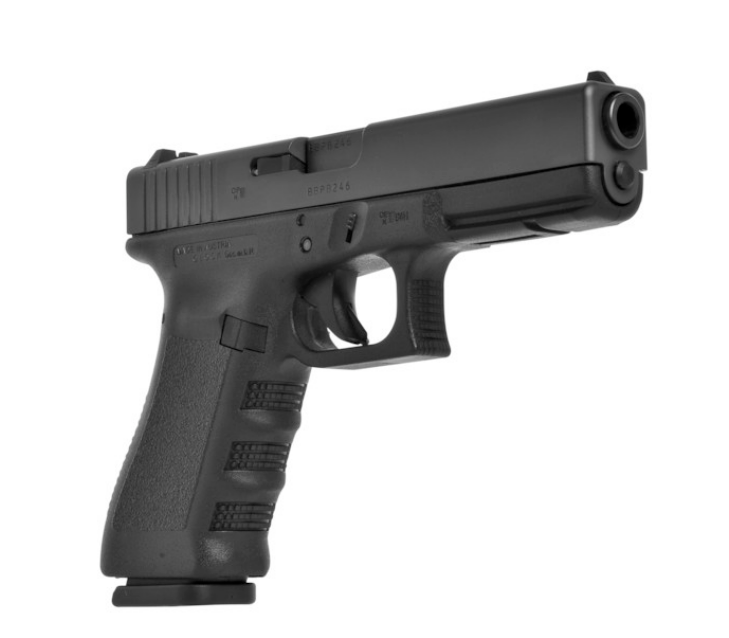
Glock 17 Origins
Glock’s worldwide prominence began when the Austrian Army started looking for a more modern 9×19 service pistol to replace its WWII-issue Walther P38s. This new handgun was to be designated the P80 and was scheduled to enter service no later than 1983. A number of existing military pistols were to be considered. The Austrians preferred an Austrian-designed and -manufactured weapon, due to some rather complicated neutrality treaties. At the time, Steyr was thought to be the sole Austrian pistol manufacturer able to meet the strict Army specifications for a new service pistol. Steyr submitted its Model GB—a large and heavy, double-action, gas-locked, 18-shot 9×19.
Enter Gaston Glock
In 1982 Gaston Glock, head of Glock Ges. m.b.H., which had contracts with the Austrian Army to manufacture military field equipment, decided to enter a pistol to compete against the heavily favored Steyr GB. For this purpose, Glock assembled a group of Europe’s leading firearms experts to combine the best modern designs and features into a radical new handgun that could be produced by his company. The group’s recommendations were compared to the military requirements specified, and the AP80 was submitted.
The first production examples of the pistol we now know as the Glock 17 were sent to the military for testing 18 months later. Throughout the course of some extremely stringent tests, the relatively unknown Glock beat every other competing pistol hands down. In 1983 the Austrian Army officially placed an order for 25,000 Glock 17 pistols. In 1984-85, both Norway and Sweden adopted the Glock pistol after extensive trials. Shortly after, NATO selected the Glock 17 as a NATO standard-issue sidearm.
Glock Comes to America
First imported into the U.S. in January 1986, the Glock 17 soon was being tested by a number of different police agencies. One of the first large agencies to consider the Glock 17 was the Miami P.D. After extensive and rigorous testing, they adopted the Glock as a duty pistol in 1987. Subsequently, many other police departments (and civilian shooters) followed. The new pistol was ideal as a duty or defense gun.
Individual Glock 17 pistols fired tens of thousands of rounds without a malfunction. Despite this abuse, the Glocks did not rust, inadvertently discharge, or experience any major parts breakage. Time and again, when exposed to extreme conditions and abuse, the Glock 17 has proven its flawless reliability.
Specifications
The Glock 17 has an overall length of 8.03 inches and an overall height of 5.47 inches. The width of the gun at its widest point is 1.26 inches. Barrel length is 4.49 inches, which is comparable to many other military pistols. The weight of an empty Glock 17 is a super-light 24.87 ounces. It’s one of the lightest full-power service pistols ever. Thanks to the Glock 17’s hexagonal rifling system, excellent accuracy and higher-than-normal bullet velocities are obtained with most 9×19 loads.
Operation & Handling
Overall, the 17’s handling and balance are excellent. Sight acquisition is fast and positive. Lastly, felt recoil, thanks to the 21.5-degree angle of the ergonomic grip, is controllable and “soft,” even with high-power loads. The grip angle positions the slide and barrel very low over the hand. This greatly lessens the effects of muzzle jump and recoil. The balance of the G17 is neutral with a full magazine in the gun. It becomes slightly muzzle-heavy as rounds are fired. The standard magazine capacity is 17 rounds.
Key Parts
The function and manipulation of the trigger, slide stop, disassembly catch, and magazine release are easily understood. The G17 also has proven itself to be an extremely safe pistol in extensive testing. The trigger, firing pin, and drop safeties incorporated into the Glock 17’s Safe Action allow a shooter to safely carry the pistol fully loaded, yet be able to instantly bring the pistol into action just by pulling the trigger. The polymer frame, corrosion-resistant and Tenifer heat-treated slide and barrel, make cleaning and maintaining the Glock 17 quick and easy.
Field-Stripping
The Glock 17 can be field-stripped in seconds without tools, and it breaks down into only five large parts. Because of its simple design and construction, the G17 is one of the few handguns in the world that has total parts interchangeability between models. Depending on the frame generation, only 33 to 34 parts make up the entire pistol. If repairs are necessary, the entire pistol can be detail-stripped to the last component part with nothing more than a 3/16-inch punch.
Final Notes
Designed as a military pistol, the Glock 17 makes a formidable weapon for personal defense. Proven reliability, accuracy, durability, light weight, and ease of maintenance and use give the Glock 17 a unique status among modern combat handguns. The G17, Gaston Glock’s original design, holds a special place in the ever-growing Glock family of pistols, and it rightfully can take its place among the world’s best military handguns.









